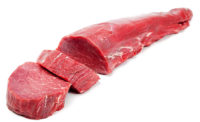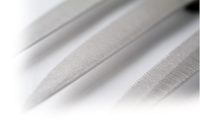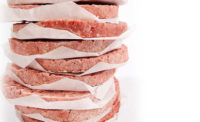Many meat and poultry processors, trimming and deboning equipment manufacturers and universities continue to pursue automation and robotics for the trimming and deboning process. One challenge is to scale the systems up to process and control equipment based on line speeds, specifically in the United States, says John Johnson, industry consultant.
From poultry to meat, most species can have automation applied. “As my research has shown, the anatomical landmarks on various species can and is used to direct where the end effector interacts with the product to be deboned or trimmed,” Johnson explains.
Johnson has been studying the advantages of automation in general to produce a more consistent cut or trimmed product. Additionally, although a significant capital cost is associated with the automated equipment, the reliability is much better than the human resource, he says.
While most of Wayne Farms’ trimming is done by hand, the Oakwood, Ga., company recently added a portioning system, which has automated trimming. “It is basically the same machine that has been around for years, but with two additional cutting heads, which increases the throughput,” says Michael Crump, the company’s senior director of fresh operations. “It also has the fat recognition software that helps with yield.”
The two greatest opportunities, Crump thinks, still remain bone recognition and automated harvesting after the actual water jet portioning process. While trimming and deboning equipment suppliers are working on both of these and have test machines running, neither has been proven and brought to market, Crump says.
In the near future, Crump expects that equipment suppliers will perfect the bone recognition piece with the machine recognizing the bone and then the water jet cutting the bone out. He also thinks the industry is close to seeing automated harvesting. “It is a vacuum system that actually sucks the finished portion off the belt to be transferred to another destination,” Crump explains.
Johnson agrees that research continues to be done with many companies engaging universities to couple vision systems and mechanical applicators to specific tasks.
Still, the capital outlay remains a challenge as well as securing a robust system to withstand the extreme environment of the processing floors, Johnson says. For example, the temperatures fluctuate from a cold processing room to the heat and moisture during clean up procedures.
“I have advocated for automation ever since I started working on processing floors in the late 1980s,” Johnson says. “It is inevitable that automation will ultimately be embraced by the industry. Labor costs will continue to increase along with a decreased availability of workers.” NP





Report Abusive Comment